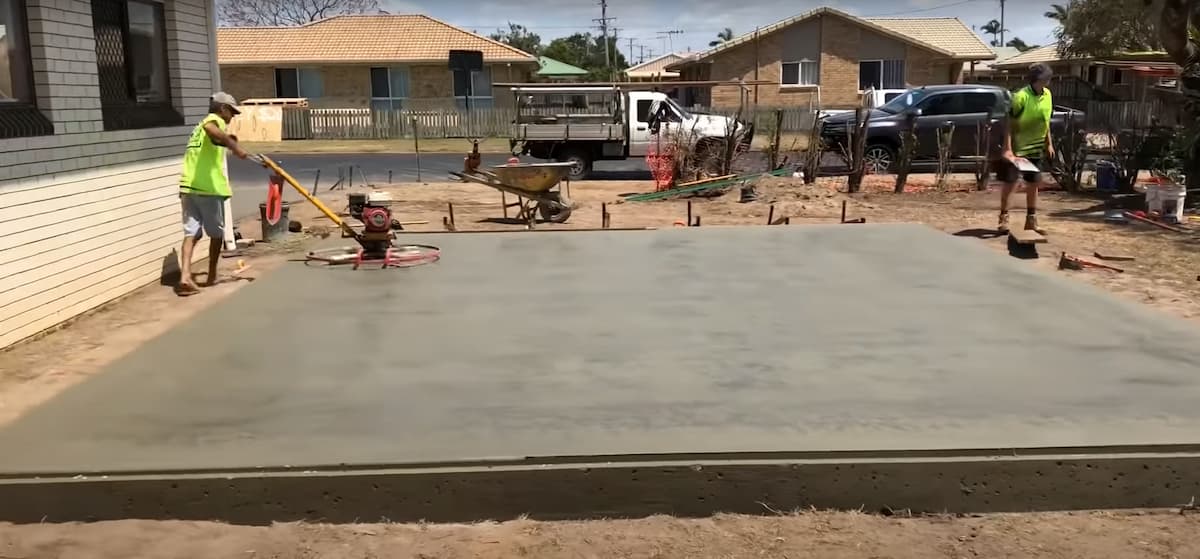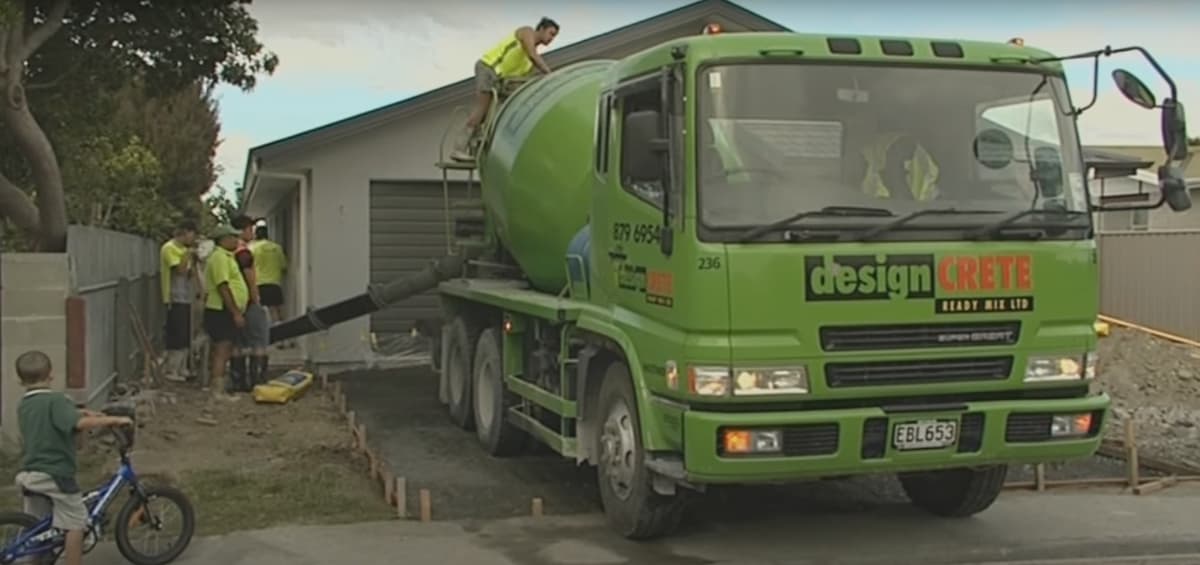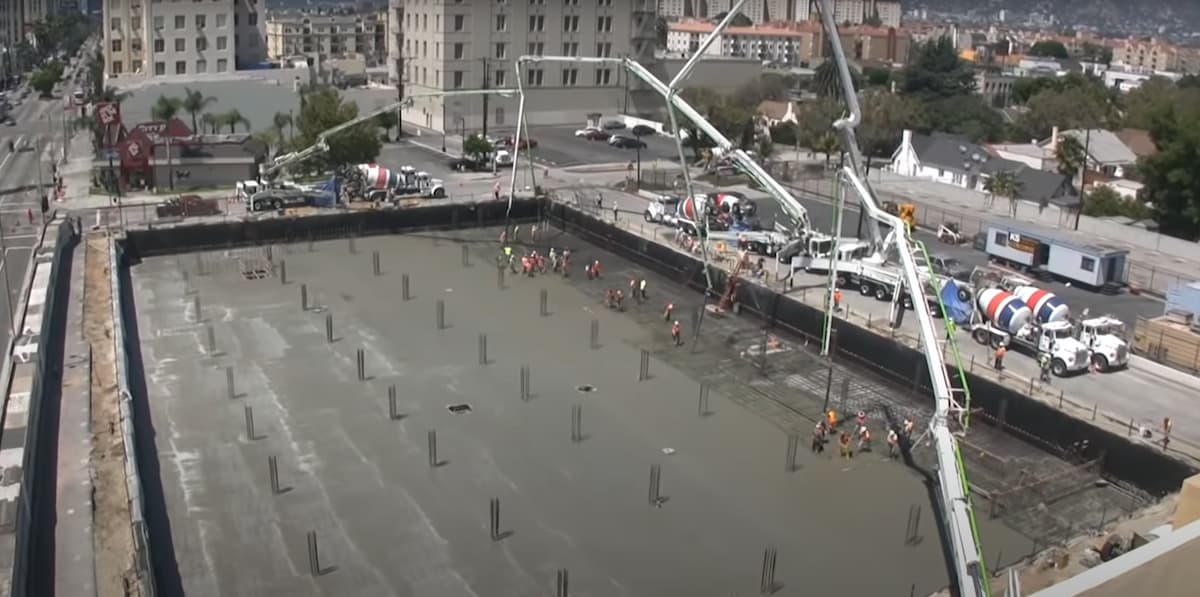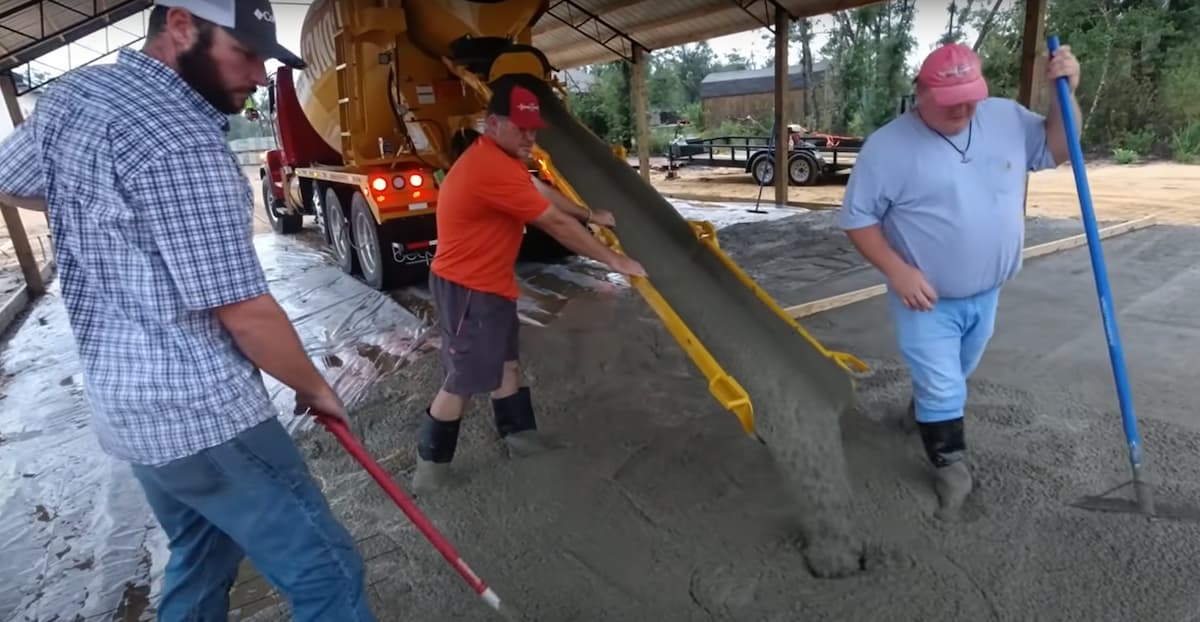
Cement is an essential ingredient in concrete and mortar, which are the basic building material.
What is Cement?
Cement is a fine powder made by heating limestone and clay minerals to very high temperatures. The resulting material, called clinker, is then ground with a pozzolan such as silica fume or fly ash into the powdered product we call cement.
Cement and water form a paste through which almost no particle can pass. Cement provides the solid foundation for nearly all structures of modern civilization: bridges, roads, dams and buildings. Everywhere where there is construction there is concrete.
The choice of type of cement depends on many factors including cost, setting time and strength development characteristics required in the final product. These requirements are not necessarily all exactly the same from one application to another so there are literally thousands of different types of cement around the world.
Where to Find the Materials for Cement?
The raw materials used in cement manufacture are naturally occurring rocks and minerals. The most important of these are the silicates, mainly limestone (calcium carbonate), clay (silica and alumina) and iron ore (magnetite). These raw materials are reduced to very fine particles during the “cement kiln” firing process which drives off all impurities, carbon dioxide and water content of the crushed rock.
Parts of this material will be incorporated into new rock but some will remain as a fine powder for use in cement or new building products of other types such as aerated concrete blocks.
What is Cement Made of?
This is a question that usually drives the production engineers in the cement industry crazy. Many think of cement as being made of just one material, mainly limestone. It does take about 25% limestone to make Portland Cement but it takes 10 other raw materials in order to produce a high-quality cement.
The Basic Raw Materials
The raw materials for making cement come from limestone, clay and shale. The minerals in these rocks are crushed to a powder before being heated at temperatures between 780 degrees C and 1000 degrees C. In the heating process, chemical reactions turn the material into a clinker, which is then ground into a fine powder that forms cement. Fly ash, an industrial by-product, is used to replace cement powder.
How is Cement Made?
Cement is made by heating limestone and clay to very high temperatures during the cement manufacturing process in the cement plant. This releases three different materials, which are then ground into a fine powder that makes cement.
Parts of this material will be incorporated into new rock but some will remain as a fine powder for use in cement or new building products of other types such as aerated concrete blocks.
What is Portland Cement?
Portland cement is the basic ingredient of concrete. It is made by heating limestone (calcium carbonate – CaCO3) with clay (silica and alumina – SiO2 Al2O3) at high temperatures in a rotary kiln.
Portland cement is named after its colour – it’s the familiar grey of many buildings. Portland cement is a general-purpose cement for use with aggregates to make concrete used in construction and engineering.
Other types of cement, such as sulphate-resisting and low heat cement are used for particular purposes requiring special characteristics.
How is Modern Cement Made?
Today’s Portland Cement has many ingredients added to increase its strength and durability. The raw materials, limestone and clay, are heated in cement plants during cement manufacturing until they release free lime gas. This is the first step in the cement manufacturing process and making a portland cement clinker or starting material for blended cement which contain less than 30% clinker. After the raw material is heated, it flows through a rotary kiln that reduces it to powdery pieces. The chemical process that occurs during heating creates calcium silicates and aluminates that are then ground into cement powder. If fly ash replaces some of the cement powder, the resulting blended cement can have better strength and durability.
What are the Main Components of Cement?
The main components of cement are calcium silicates, aluminates and ferrites. All these compounds give the product high strength properties
The amount of alumina present in clinker can be increased by adding bauxite or nepheline to the cement kiln.
What is a Cement Factory?
A Cement factory is a place where portland cement is manufactured. There are many different types of cement factories – wet process, dry process and semi-dry process. The dry and semi-dry cement factories use rotary kiln technology. These cement manufacturers use Vertical shaft cement kilns which are the most common way of making cement all over the world.
Average Cement Production
World production is around 4 billion tonnes of cement mixed per year. China, the United States of America, India, Japan and countries in Southeast Asia are the biggest producers of cement and concrete.
Cement Manufacturing Process
The manufacturing process of making cement is a sequence of steps in a manufacturing plant known as cement mills. The basic ingredients for making cement are limestone and clay. These raw materials are mixed with water and ground using milling equipment known as a ball mill to form a slurry. This slurry is then mixed with gypsum in a proportion of 1:0.5 to make the raw mix.
The ball mill is a rotating drum containing steel balls. The raw materials are fed into the mill and the grinding process begins as the steel balls grind against each other. The rotational speed of the mill is between 50 and 100 RPM. Different types of alloyed steel balls are used for producing different grades of cement. You can read more about ball milling
What is a Dry Process Cement Plant?
A dry process cement factory does not use water to make portland cement. Instead, a raw mix including a substance called clinker, coal fly ash, slag cement and gypsum is fed into the rotary kiln to make portland cement.
The raw mix enters the dry process plant through a screw conveyor or inlet distributor. Often two inlet distributors are used to ensure better mixing of materials. This material is then ground with water added in a ball mill to form a slurry. This process takes less than an hour.
This semi-dry mixed material (remix) travels on belt conveyors towards three different kilns – preheater, calciner and cooler. The length of each kiln is more than 200 meters long with six rotating drums that act as heat exchangers within the kiln.
As the material moves along the kiln, heat is supplied by burning coal which changes the material into a substance called clinker. Heat is also produced through the rotational friction of the drum.
The preheater kiln usually has four rotating drums that can produce 800°C to 900°C temperature. The calciner kiln has five rotating drums with an average temperature of 1150°C to 1250°C. The final stage, the cooler kiln, reduces the temperature down to room temperature for easy handling of cement.
What is a Wet Process Cement Plant?
In the cement production process in a wet process plant, water is added to the raw mix along with a binder agent. The slurry is then transported to a rotary kiln for clinker making. It can have one or more preheaters and one or more calciners depending on the capacity of the plant.
The raw mix is ground in a ball mill as in a dry process cement factory. But instead of using coal ash, an alternative source such as fly ash from power plants, blast furnace slag from steel industries or natural pozzolans from volcanic regions are used.
This material moves towards either one or two preheaters where it is heated up to 650°C to 700°C before entering the first stage of the kiln. From the first stage of the kiln, this material moves to one or more calciner drums. Heat is supplied by burning natural gas for higher temperatures and fuel oil in case of lower temperature requirements.
Cement Grinding Process
The last step before clinker making is grinding of the raw mix (cement grind) using different types of mills such as ball mill, tube mill and edge runner mill depending on plant capacity and which type of cement manufacturing plant it is – dry or wet.
Raw mix ground in a ball mill (vertical shaft) consists of 65% particles smaller than 45 microns while balls used are 12mm in size with a rotational speed between 60-80 RPMs. A typical ball mill can produce 3500 tons of cement per hour. Clinker is cooled down in a rotary cooler where steam is used for heating up to 150°C before entering the kiln.
Grinding begins when raw mix moves towards the mill through either flue gases or air. The grinding process can be described as follows: Friction between balls and the material causes the balls to heat up. This heat is transferred using fluid (oil) and then to the raw mix.
How Much does a Cement Factory Cost?
A Portland Cement manufacturing plant costs US$ 300-600 million depending on various factors such as location and capacity.
Dust Emissions During the Manufacturing Process
Any cement manufacturing plant will release dust, hot gases, small particles of the raw mix during the grinding process. It is important to note that most types of dust are not hazardous and can be handled using wet scrubbers. Fly Ash emitted during calcining stage contains heavy metals which need special treatment with scrubbers to avoid health problems for workers in the plant.
Blast furnace slag and coal ash used in wet process plants increase the alkalinity of cement. This increases chances of fume and hot gases formation during production which can be dangerous for the worker’s health and also add cost by increasing the number of workers needed for maintenance activities.
How much Electricity does a Cement Plant Use?
A typical 100 ton per day plant requires about 50 MW of power with a cost of US$ 16-26 million. This electricity is generated in a separate plant which supplies steam to the kiln and also provides electricity.
An example of a cement factory is Naphtha based Rotary Kiln Clinker Grinding unit, where the major raw materials used for production are clinker, gypsum, limestone and chemical additives.
Difference between Cement and Concrete?
Cement is a powdery substance made from raw material that binds sand and rocks and has a specific cement making process. Concrete is made by mixing cement with sand, gravel or crushed stone and water to form a paste. This paste can be poured into moulds to make structures such as roads, airfields and runways.
What are Ready Mix Concrete Companies?
Ready Mix Concrete is a pre-mixed concrete (cement, sand and gravel) produced in central production facilities (concrete batching plants). Ready-mix companies supply ready mix manufactured at these locations to meet construction demands. These ready mix concrete companies have increased cement production.
What can Cement Be Mixed with?
Sand is the most common substance used with cement to make concrete. It can also be mixed with other materials such as fly ash or slag.
Concrete is made by mixing cement, sand and gravel or crushed stone along with water. Ready-mix companies supply ready mix produced at central locations to meet construction demands. Cement production has increased with the increase in demand. Iron ore, limestone, clay and shale are some of the raw materials used in cement production. Raw mix ground in a ball mill consists of 65% particles smaller than 45 microns with 12mm balls used that rotates at 60-80 RPMs.
Alternative Fuels
Alternative fuel used in cement plants run on gas. Coal is the most abundant fossil fuel used worldwide for energy production. It is used in thermal power plants to produce electricity, for steel making and by the cement industry. Alternative fuels are more environmentally friendly compared to traditional fuels like coal or petroleum coke.





